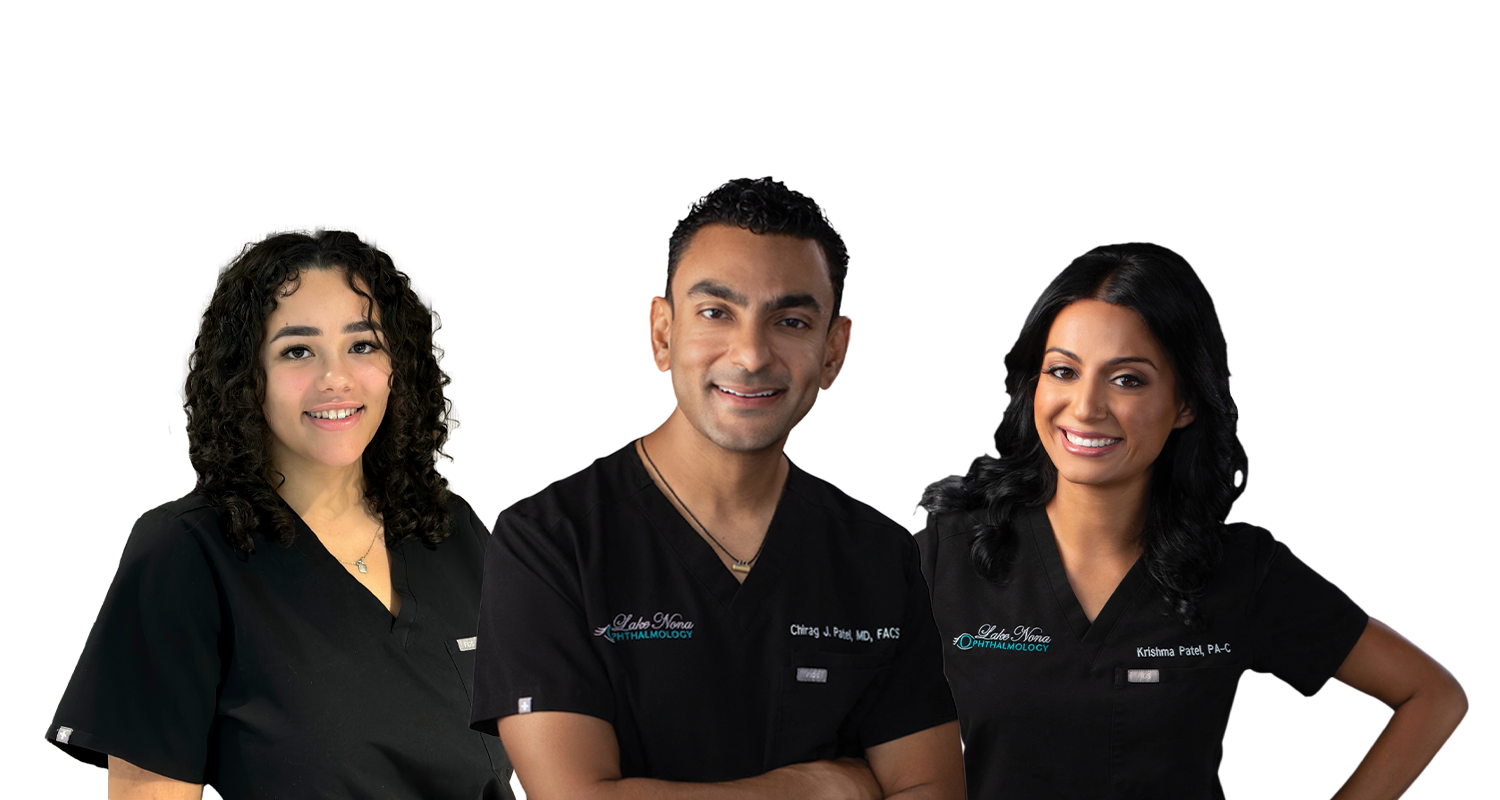 What are cataracts?
What are cataracts?- What are the symptoms of cataracts?
- Who can get cataracts?
- What causes cataracts?
- If I have cataracts, can I prevent them from getting worse?
- What treatments can help with cataracts?
Cataracts are a common part of aging. If not cared for, cataracts grow worse over time and may lead to significant vision loss. It is important to learn the signs and strategies to prevent cataracts from progressing. This blog will help you understand the physical condition of cataracts and what you can do if they begin to affect your eyesight.
What Are Cataracts?
Cataracts are the clouding of your normally clear lens. When you look in a person’s eyes, you usually see the sclera (the white of the eye), the pupil (the black dot in the middle of the eye), and the iris (the colored ring around the pupil). Behind the pupil, rests the lens of the eye, which is normally clear. The gradual clouding of the clear lens can blur vision and lead to vision loss.
For the cataract sufferer, it’s like looking through a foggy window. This makes it harder to perform regular tasks such as driving, reading, or working on the computer. In the early stages of the disease, you can increase lighting or wear stronger glasses to counteract the effects of this disorder; however, cataracts are a progressive disease that, if left untreated, can lead to complete blindness.
What Are the Symptoms of Cataracts?
 If you develop cataracts, some of the symptoms you may experience include:
If you develop cataracts, some of the symptoms you may experience include:
- Blurry, dim, or clouded vision
- Seeing faded colors that may have a yellow tint
- Difficulty seeing at night
- Double vision
- Increased sensitivity to glare, especially when driving
- Worsening of your eyeglass prescription
- An increased need for a bright light when reading
- Seeing halos around lights
As the cataract grows in size, it will expand to cloud more of your lens, distorting the light passing through the eye. Over time, the symptoms will worsen. If you notice any changes to your vision, see your doctor right away.
Who Can Get Cataracts?
Anyone can get cataracts, but they primarily affect older people. Babies can even be born with congenital cataracts and children can develop them. No matter your age, cataracts are very common in the United States. One in five Americans aged 65 to 74 develop cataracts in their lifetime. Worldwide, cataracts are the leading cause of blindness.
Cataracts often are the natural result of an aging eye, and they can develop without any other apparent cause. However, we know there are a few things that increase the risk of developing cataracts, including:
- Chronic use of certain drugs such as corticosteroids
- Diabetes
- Drinking alcohol
- Having an eye injury
- Infrared exposure
- Nutritional deficiencies
- Smoking
- X-ray exposure over a long period (as in radiation therapy)
- Uveitis or other inflammatory eye diseases
You may not have symptoms early on in the disease’s progression, but your eye doctor can detect the signs of the cataracts. This is one of the reasons why your regular eye exam is critical to maintaining your eyesight.
What Causes Cataracts?
There are more than a dozen types of cataracts. All grow differently and could be caused by different things, but the ultimate result of these conditions is a loss of vision.
The natural process of aging can gradually break down the lens of the eye. As the fibers and proteins in the eye deteriorate, your vision will worsen.
Genetic disorders that create other types of health issues can also cause cataracts. Health issues such as diabetes can also cause the disease.
Traumatic cataracts can form after an injury such as getting hit in the eye by a baseball. You can even develop cataracts if you work outdoors frequently and fail to wear sunglasses with UV protection. Farmers and fishermen are two groups of workers prone to this type of cataract.
If I Have Cataracts, Can I Prevent Them from Getting Worse?
 There are a few things you can do to try to slow the progression of your cataracts. First, see your doctor regularly, even if your eyes seem to be just fine. An annual eye exam is a preventative action that can spot changes in the eyes that may be too gradual for you to notice—and this includes cataracts.
There are a few things you can do to try to slow the progression of your cataracts. First, see your doctor regularly, even if your eyes seem to be just fine. An annual eye exam is a preventative action that can spot changes in the eyes that may be too gradual for you to notice—and this includes cataracts.
If you have diabetes, it’s important to maintain your health by closely monitoring your blood sugar. People who have diabetes are more likely to develop cataracts. In fact, if your blood sugar stays too high for too long, it will cause the lens of your eye to swell and create vision problems.
Smoking affects your health negatively for all kinds of reasons, but it can also lead to cataracts. There are dozens of smoking cessation programs devoted to helping you quit. See your doctor about the ones available that can help you take back your health and stop smoking.
Alcohol consumption also appears to be a contributor to cataract formation. Even having two drinks a day could increase your risk. Along the same lines, there are benefits to eating fruits and vegetables and staying hydrated regularly. Healthy eating gives your body the vitamins it needs for eye health for all the stages of your life.
Finally, you can slow down the progression of cataract development and even reduce your risk of developing cataracts in the first place by simply wearing sunglasses. Look for a good quality pair of sunglasses that block 100% of the sun’s UVA and UVB rays.
What Treatments Can Help with Cataracts?
Once cataracts have taken hold, surgery is really the only option. Catching the problem early is the best way to slow down disease progression. If cataract surgery is necessary, your surgeon will remove the cloudy lens and replace it with a clear, artificial one.
If you haven’t had the health of your eyes checked recently, it’s time to call Lake Nona Ophthalmology. We offer our patients the peace of mind that comes with a regular preventative exam. Together, we can carefully monitor your vision for any changes that could lead to cataracts and help you experience clear, healthy eyesight for years to come.


